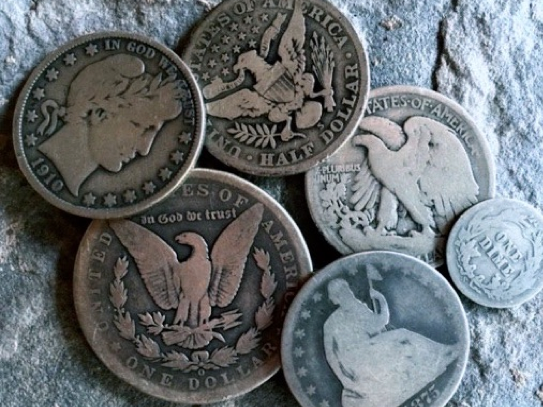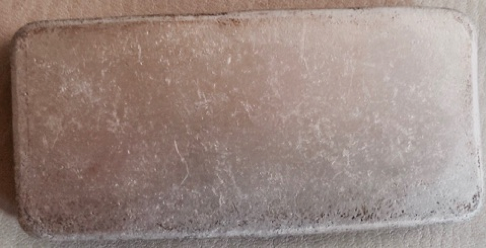
© 2010-2025 by Fine Arts of the Southwest, Inc. All rights reserved.
Unauthorized reproduction or use is strictly prohibited by law.
“Ingot-Silver” or “Coin-Silver”?
Common misconceptions and important distinctions.
___________________
There exists a great deal of persistent and totally unnecessary confusion among some collectors and dealers of Native American jewelry about what precisely is meant by the term “ingot-silver”. Many people are under the completely mistaken impression that “ingot-silver” is somehow a different “type” of silver or that there is some sort of unique age or quality distinction between “ingot-silver” and other types of silver with “ingot-silver” being the rarer, more desirable form. The truth of the matter is actually much different and very straightforward.
"Ingot-silver" is, quite simply, any silver of any age and purity which has been melted down and then cast. It can be made from silver dollars melted down a century ago or from silver knives and forks melted down last week or melted-down silver casting grains or melted-down silver jewelry scraps but if it has been melted down and cast, it is then known as "ingot-silver." Ingot-silver can be of 90% purity if it is made from old American silver coins or 92.5% purity if it was made from your Grandmother’s Sterling silver flatware or any other lesser or greater degree of purity based on the percentage of additional elements such as copper which the particular piece of silver contains.
_________
“Ingot-silver” is not always “coin-silver” and “coin-silver” is not always “ingot-silver”. But a great deal of
Native American silver jewelry, particularly early historic jewelry, is both “ingot-silver” and “coin-silver”.
_________
"Coin-silver" is silver which is made from silver coinage, usually American or Mexican in the manufacture of Southwestern Native American jewelry. The time-honored traditional practice is to melt coins down and cast them into tufa molds or into ingot “slugs” which are then worked in various ways into finished jewelry, but, occasionally, jewelry pieces are hammered out directly from the original coins themselves without melting them down. Pieces resulting from this latter practice are “coin-silver”, but they are not “ingot-silver”. If silver coins are melted and then cast to make jewelry, the resulting pieces are both “coin-silver” and “ingot-silver” and should therefore more properly be referred to as being "coin ingot-silver" or "ingot coin-silver".
The vast majority of early historic Navajo "ingot-silver" jewelry pieces were created in this traditional manner from either melted-down American silver dollars, half-dollars or quarters or Mexican Pesos and thus they are rightfully both “ingot-silver" and “coin-silver" pieces.
--Steve Diamant
A selection of some of the types of historic American and Mexican silver coins used by Navajo and Pueblo silversmiths to make coin ingot-silver and coin-silver jewelry.
An example of a cast ingot-silver “slug” which can be made from any kind of silver. This “slug” weighs 100 grams or 3 1/2 ounces, enough for a good-sized bracelet.

